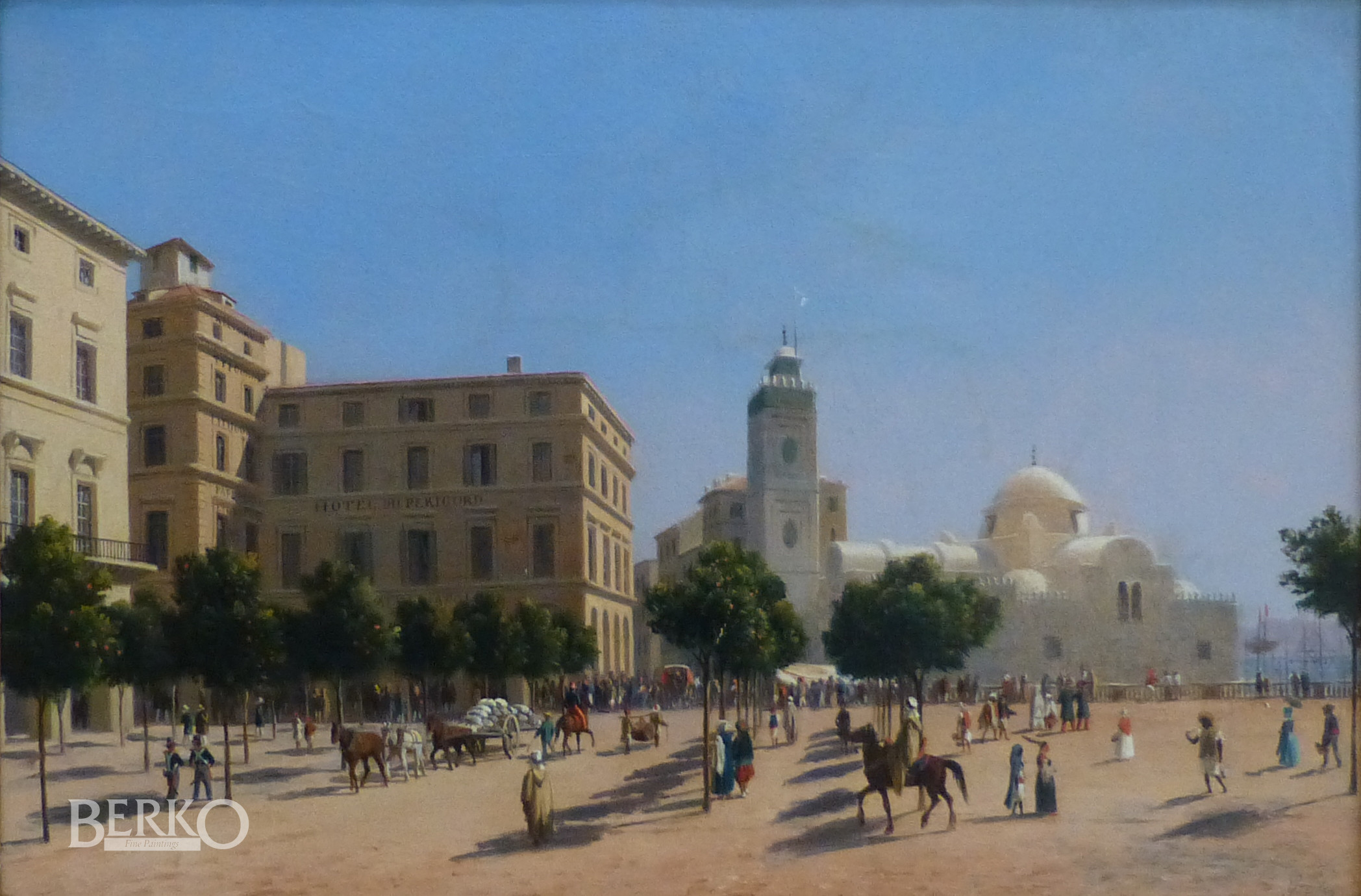GRÖLIG Curtius (‘Curt’) Victor Clemens
THE PLACE DU GOUVERNEMENT IN ALGIERS
Oil on canvas: 29 x 42 cm / 11.4 x 16.5 ins
Signed lower right
Painter of local scenes, hunting scenes, town views, landscapes, seascapes, still-lifes and flowers. Orientalism.
Curtius (‘Curt’) Victor Clemens Grölig studied and collaborated with Horace Vernet. A study trip took him from Hamburg to northern Norway and he also stayed in Munich and Algiers before settling in Paris. From 1836 to 1839, he exhibited in Copenhagen and was awarded a third-class medal in 1845.
Originally from Meissen in Saxony-Anhalt and protégé from the King of Saxony, Curtius Grölig was one of the first artists to have painted Algiers and its surroundings after the Conquest. Famous for his talent as a painter of landscapes, he exhibited many seascapes and Algerian landscapes at the Salon de Paris from 1844 to 1859 and also at the 1855 Exposition Universelle, also in Paris. Several of these works are now in the collections of the Louvre (“Débarquement du duc d’Orléans à Alger”), the Palace of Versailles and the Fine Arts Museums of Troyes and Reims.
The Place du Gouvernement in Algiers was the central square in colonial Algiers. On its parvis, overlooking the sea, we distinguish the Mosque of the Fishery, one of the historical mosques of the city built in 1660. The Hôtel du Périgord was one of the first hotels of the capital after the Conquest: from 1842 on it is mentionned in the annuary of the city with Mr Salomon as its director.
Period:
Meissen (Saxony-Anhalt) 1805 - Versailles 1863
German School
Exhibitions:
Amiens - Paris - Reims - Trier - Troyes - Versailles
Literature:
E. Bénézit, "Dictionary of Artists", Paris 2006, Vol. 6, p. 712-713.
M. Vidal-Bué, "Alger et ses peintres", Paris 2000.

